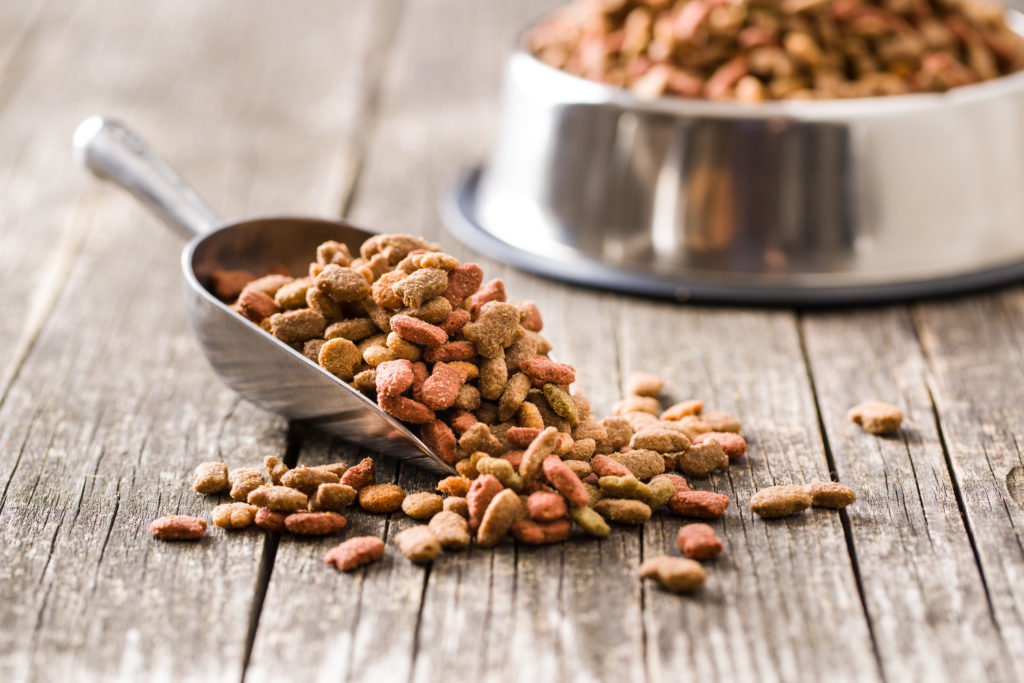It’s no secret that the pet food industry has responded to demand and there are more premium and super premium diets available than ever before. So, what is it about these foods that makes them so desirable to pet owners? Let’s take a look.
Consumers are continuously looking for new and improved ways to feed their pets’ nutritious, satisfying and vitamin-rich foods. As a result, manufacturers are using more and more premium and super premium ingredients – and pet owners are loving it. So, what is it about these ingredients that entices consumers to pay a higher price?
Premium & Super Premium Pet Food
The terms premium and super premium are used frequently and often interchangeably. While every manufacturer may have its unique spin on the definitions, there are a few definitive “yes” and “no” ingredients that are standard across the board.
In premium and super premium products, there will usually be no animal by-products, artificial colors or preservatives, or meat and bone meal – an ingredient that is considered by many consumers to be lower quality than meat meals or fresh meats and poultry.
What you can expect to find in premium and super premium pet foods are nutritious meat meals, fresh meat, poultry, or exotic meat. You may find grains or legumes, and likely a fruit and vegetable blend that provides pets with additional antioxidants.
Mainstream vs. Premium & Super Premium
We know what sets premium and super premium apart. But, how do they compare to mainstream pet foods? One of the biggest and most common differences is that mainstream foods typically contain meat and bone meal, animal by-products, or other ingredients considered to be low quality by many consumers, but actually may not be. “These by-products are cooked, or “rendered,” to produce a nutritional and economical feed ingredient,” says Waste Advantage Magazine. The combination of meat and bone create an excellent source of protein, calcium, phosphorus, vitamin B-12 and a number of other minerals.
“The term “by-product” comes from the fact that they are the leftovers from animal carcasses once the desirable (for Americans) muscle meat has been removed, not because these parts of the animal are inferior in quality, safety, or nutrition,” notes Clinical Nutrition Service. While some sources say you should avoid feeding foods that contain by-products, the truth is that they often provide more nutrients than muscle meats.
Premium and super premium diets usually contain higher cost and more exotic ingredients that are biologically more available and digestible than those found in mainstream diets, but that is not to say that mainstream diets are bad for pets. All diets marketed in the United States must conform to a specific nutrient profile defined by the Association of American Feed Control Officials, and all are complete and balanced for their specific profile. The choice of whether to feed a mainstream, premium, or super premium diet is for both the consumer and their pet to make.
How Premium & Super Premium is Gaining Share
There are many benefits to purchasing and feeding pets premium and super premium food. Not only do these formulas help support a healthy immune system, strong bones and muscle development, but they also help with digestion, skin and coat health and overall energy.
Manufacturers are seeing an increase in the purchasing of premium and super premium foods. In fact, during the 10 years between 2007-2017 there was a 36% increase in household pet food spending of premium brands.
So, what’s driving this push?
The industry is seeing a significant increase in pet owners – specifically in the millennial generation. Millennials no longer are looking to settle down, get married and have children right away. Instead, they are choosing to become pet owners and these pet parents want the best for their animals. “Millennials do want the food made in the U.S. And they also like words like “conservation” and “sustainability,” arguably even more in pet foods than compared to their own foods,” says one researcher.
Manufacturers recognize the desire for these products and continue to build on the growth. “According to data analytics firm GfK, more than 4,500 new pet food products were introduced in 2017, which was a 45% increase from the year before. The majority of those new products were premium and super premium.” In the three years since then, that trend has continued its rise. Manufacturers are using high-end ingredients in premium and super premium products, which gives pet food a “human-grade” emphasis that consumers are looking for.
Conclusion
The opportunities for premium and super premium pet food are promising with projections that “pet food sales will rise between 2% and 3% every year through 2023.” This is indeed strong growth on a very large base.
Manufacturers are expected to continue developing formulas that cater to millennial interests and trends. While millennials make up a large percentage of purchasers right now, consumers of all ages are seeking out the best food for their pets.
For the time being, as consumers continue to learn about premium and super premium pet food, and as sales steadily increase, manufacturers will work to refine their own fresh and innovative offerings to meet demand in the years to come.
